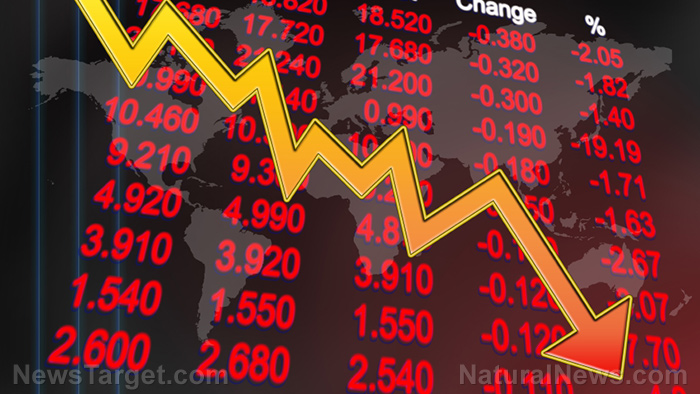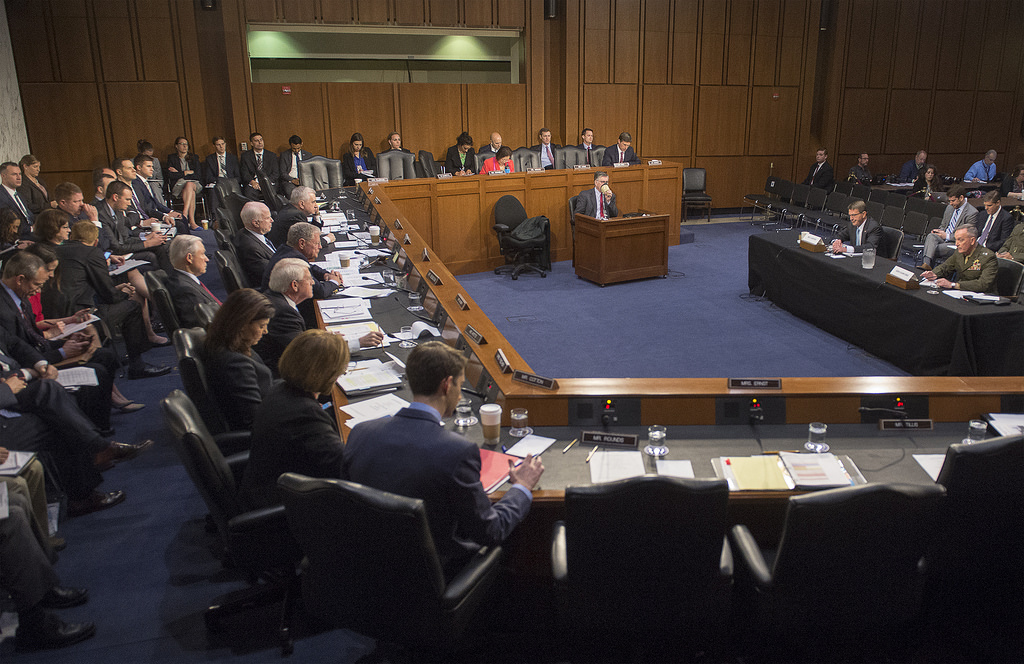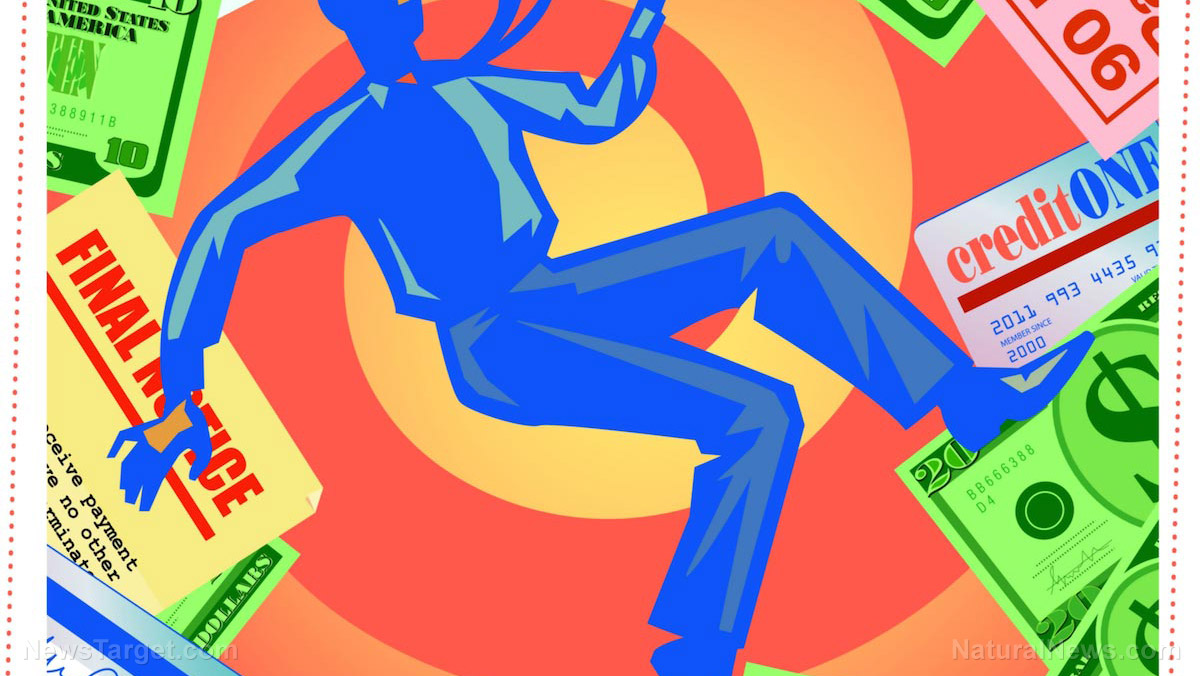Credit card and auto debt DELINQUENCIES are SOARING, especially among younger Americans
02/15/2024 / By Arsenio Toledo

New data from the Federal Reserve Bank of New York has found that credit card and auto debt delinquencies in the United States are soaring, especially among Americans aged 18 to 39.
The Household Credit Report from the New York Fed’s Center for Microeconomic Data found that aggregate household debt balances rose by $212 billion, a 1.2 percent rise from the previous quarter.
Credit card debt rose by $50 billion to a record-high of $1.13 trillion. Auto loan balances rose by $12 billion to $1.61 trillion, continuing the upward trajectory that began in the second quarter of 2020. (Related: Swelling DEBT crisis creating financial “death spiral” in America, economist warns.)
Total household debt in the U.S. has now risen to $17.5 trillion, increasing by $3.4 trillion since the end of 2019, just before the recession caused by the Wuhan coronavirus (COVID-19) economic lockdowns.
Much of this debt comes from mortgages, with mortgage balances increasing by $112 billion during the fourth quarter of 2023 and standing at $12.25 trillion by the end of December 2023.
Student loan debt rose by remained relatively stable, increasing by around $2 billion to $1.6 trillion. Other loans, such as home equity lines of credit, retail cards and other consumer loans, grew by $36 billion to $914 billion.
Younger Americans heavily burdened by debt
According to the New York Fed’s report, on an annualized basis, about 8.5 percent of credit card balances and 7.7 percent of auto loans have transition into delinquency status.
“Serious credit card delinquencies increased across all age groups, notably with young borrowers, surpassing pre-pandemic levels,” wrote the New York Fed in a press release accompanying the report.
As for the percentage of loans that have flowed into serious delinquency status, 6.4 percent of credit card data had earned that designation at more than 90 days delinquent, up from four percent a year ago.
Serious delinquencies on auto loans have jumped from under three percent in mid-2021 to over five percent at the end of 2023 for the 18 to 29 age group alone. Serious delinquencies among the 30 to 39 age group have increased to slightly over four percent. Serious delinquencies are below three percent for the 40 to 49 group, and below two percent for the 50 to 59, 60 to 69 and 70 and over age groups.
For nearly all age groups, serious delinquencies have increased to their highest levels since 2011.
Aggregate delinquency rates during the fourth quarter have increased, with 3.1 percent of all outstanding debt in some stage of delinquency. In all debt categories except student loans, delinquency transition rates have also increased.
“Credit card and auto loan transitions into delinquency are still rising above pre-pandemic levels,” warned New York Fed economic research advisor Wilbert van der Klaauw. “This signals increased financial stress, especially among younger and lower-income households.”
“In a single sentence, the economy is nowhere near as strong as the ‘soft landing’ crowd thinks. That’s why people are down,” writes financial expert Mike Shedlock for MishTalk. “Other than mortgages, this data is very recessionary. Consumers are struggling to maintain lifestyles and using credit cards to do so.”
“The jobs picture is not rosy either, if anyone bothers to drill into the data instead of touting the headline numbers,” added Shedlock. This claim is supported by a report from PYMNTS which found that 42 percent of American consumers who live paycheck-to-paycheck expect the interest rates on their loans to increase during 2024.
Learn more about the state of debt in the United States at DebtBomb.news.
Watch this video from John Willians discussing how over 150 million Americans are struggling with credit card debt.
This video is from the This Is John Williams channel on Brighteon.com.
More related stories:
American economy running on FUMES as consumer debt binge reaches ominous and historic fever pitch.
DEBT TRAP: 4,500 Walmart self-checkout kiosks offer “buy now, pay later” loans for basic items.
Credit card DEBT has SOARED, thanks to BIDENFLATION.
Sources include:
Submit a correction >>
Tagged Under:
auto debt, Bubble, Collapse, credit card debt, debt bomb, debt collapse, debt delinquency, economic riot, Federal Reserve, Federal Reserve Bank of New York, finance riot, financial collapse, household debt, market crash, money supply, personal finance, risk
This article may contain statements that reflect the opinion of the author
RECENT NEWS & ARTICLES
COPYRIGHT © 2018 GOVERNMENTDEBT.NEWS
All content posted on this site is protected under Free Speech. GovernmentDebt.news is not responsible for content written by contributing authors. The information on this site is provided for educational and entertainment purposes only. It is not intended as a substitute for professional advice of any kind. GovernmentDebt.news assumes no responsibility for the use or misuse of this material. All trademarks, registered trademarks and service marks mentioned on this site are the property of their respective owners.




















